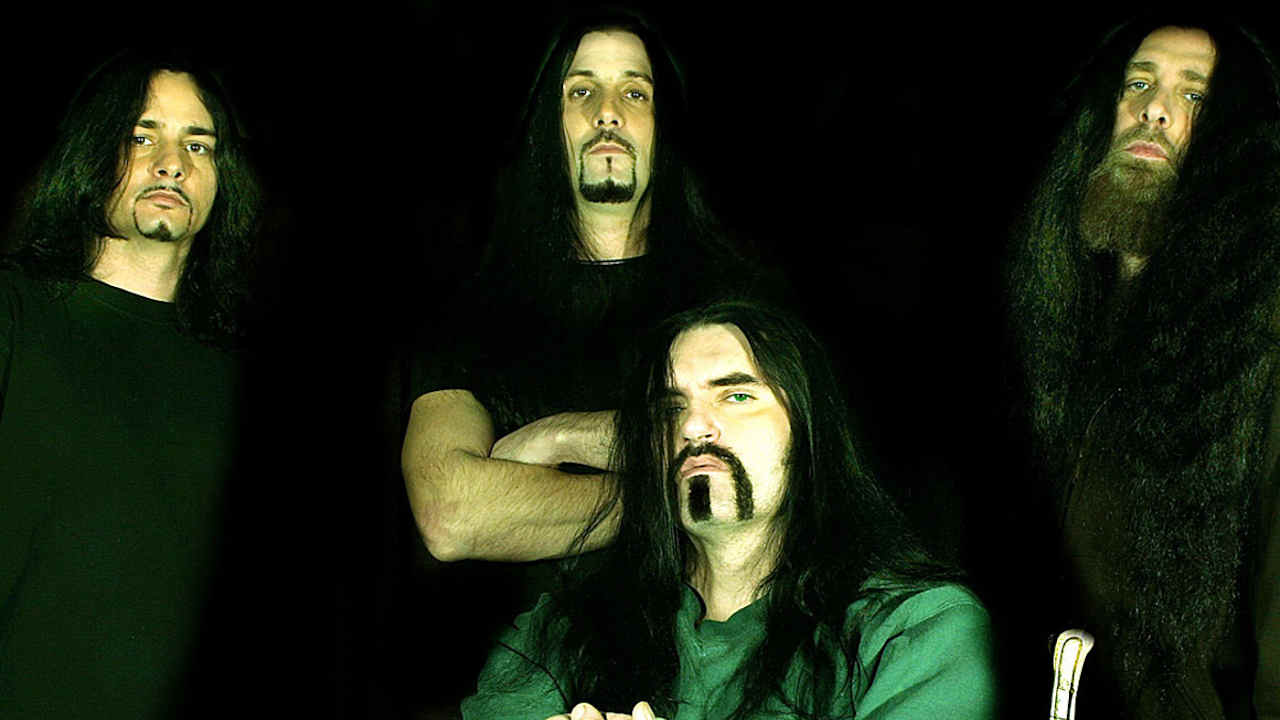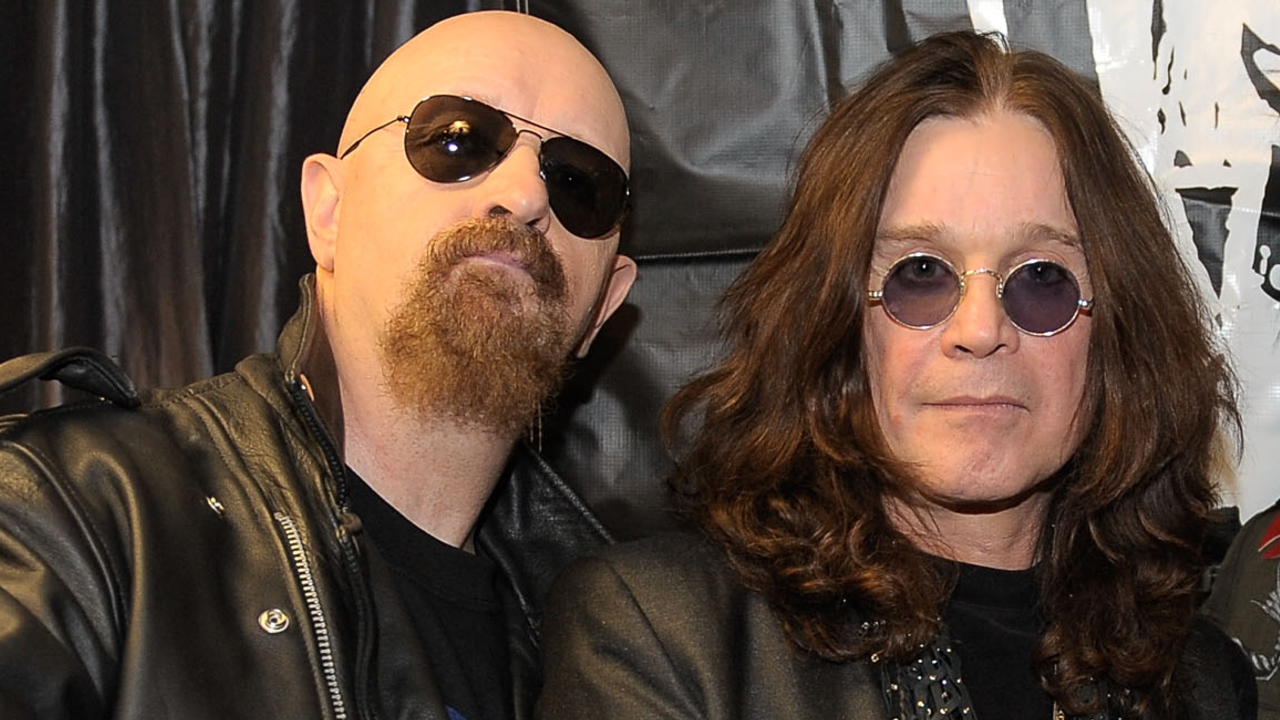“He was not doing well physically or psychologically with addiction. And when you hit a wall that hard you become disillusioned”: The tragic story of a late goth metal icon’s final album
Type O Negative’s 2007 album Dead Again would prove to be frontman Peter Steele’s swansong

Type O Negative’s Dead Again was born out of a period of tribulation, anxiety, misery and uncertainty. Come to think of it, every Type O Negative album was born out of such circumstances, but their 2007 swansong’s gestation was more chaotic than most.
Asked why there had been a four-year gap between the band’s previous album, 2003’s Life Is Killing Me and its follow-up, frontman Peter Steele neatly summed up the challenges. “Josh [Silver, keyboards] lost his father, I lost my mother, then there was rehab, jail, hospitals, getting divorced…you have to work around these things,” he told Decibel at the time.
Even after its release, a dark cloud seemed to hang over the album. Guitarist Kenny Hickey relates how SPV, the record company that put it out, went to the wall shortly after the album’s release. Hurricane Sandy would later raze the rehearsal studio where it was written to the ground. And, while they didn’t know it then, Dead Again would turn out to be Type O Negative’s final album. The band’s iconic frontman passed away on April 14, 2010, aged 48.
“Never mind this album, there's been a black cloud over this band’s entire history,” laughs Hickey today.
From the outside at least it looked like Steele had been locked in a years-long tailspin heading into the recording of Dead Again. Speaking to The Aquarian in 2007, he said: “[1999’s] World Coming Down really was a fucking nightmare because I got into drugs, alcohol, redheaded women and Burger King, and that combination, man, it’s the path to destitution. And that’s exactly where it took me: Life Is Killing Me.”
If every Type O album provided a snapshot of the singer’s state of mind at the time – and the people closest to him agree that they did – then Steele was in serious trouble at this point. The band’s penultimate album was incredibly bleak, dealing with themes of death, depression, infidelity and obsession. Songs like The Dream Is Dead and the sarcastic paean to self-hatred I Don’t Wanna Be Me didn’t exactly paint a picture of mental well-being.

According to Steele, one of the key factors in what looked like an ongoing personal breakdown was a particularly bad break-up with the woman he had been seeing for 10 years. The vocalist claimed that she had been unfaithful and his assault of the other man involved led to a stint in New York City's notorious prison complex Rikers Island.
Sign up below to get the latest from Metal Hammer, plus exclusive special offers, direct to your inbox!
“I pretty much went berserk,” he told Metal Hammer. “When I found out about her and her boyfriend, I knocked on their door at five in the morning and smacked the guy in the face. That’s what I got locked up for.”
He continued: “I tried to mask the pain by drowning myself in cocaine and alcohol until I thought I was the Pope. I used to walk the streets in Soviet and Nazi uniforms. I put a sign outside my house encouraging burglars and left my front door open. I would lie under the bed wearing night vision goggles waiting for people to come in – and they never did. The intruders never came, the fucking cocksuckers. I was a complete mess.”
A spell in the psych ward at Kings County Hospital and rehab for his burgeoning addictions to alcohol and cocaine failed to straighten the singer out. And, by the time the sessions for Dead Again started, he was still very much a mess.
“It was the most difficult album to put together,” Hickey recalls. “Peter was really bad at the time, I wasn't too great either, but he was really bad. At that point he wasn't even driving any more. We had to go and pick him up from his house, take him to the rehearsal studio and we’d just start playing in front of each other.”
This dynamic did help create a uniquely loose and energetic vibe for a Type O Negative album. Where previously Steele would largely write alone and present nearly complete songs to be hammered out with his bandmates, this was a more collaborative approach. The frontman and bassist was still the primary creative engine but this time out the songs grew and developed out of a process of face-to-face jamming.
Drummer Johnny Kelly also played live in the studio for the first time – the band having used a drum machine for recording since the departure of Sal Abruscato after their breakthrough third album Bloody Kisses. As well as adding what Hickey describes as a more vibrant feel to the album, this rather more improvisational songwriting process contributed to the sprawling scope of the album, with many of the songs approaching or passing the 10-minute mark and taking the form of multi-part suites. It yielded fruit but, with the way the writing sessions frequently degenerated, it was also an exhausting way of making an album.
“At that point in time the drinking would start at 7pm when we entered the rehearsal studio,” Hickey recalls. “We gained some good ground for two or three hours then it would get out of control and it would usually end up in a drunken argument of some sort. We'd leave about midnight and I'm sure Peter would stay up then sleep all day and be up again about two hours before we picked him up to start the cycle again. We did that for like five days a week for about eight months. It was pretty terrible.”
The musical results were impressive, though. While it was never intended as Type O Negative’s swan song, Dead Again serves the purpose well. In parts it has the metallic drive of Steele’s former band Carnivore (who he had resurrected prior to recording this album) and Type O’s rough and raw debut Slow, Deep And Hard. In others it revisits the gothic lustre of their vampiric mid-period. And there are a few new tricks like the almost prog-like complexity of the epic 14-minute-plus These Three Things. It might seem like a snapshot. It wasn't really meant to be but using all the techniques that we'd built up over two decades of playing together, it definitely has all the tricks in the bag,” nods Hickey.
Lyrically, the album wasn’t the most focused of the band’s catalogue. The opener and title-track was a straightforward look at its writer’s continuing struggle with addiction and relapse, kicking things off with the lines, ‘The first to admit I'm the doomed drug addict/ And I always will be, hey man, don't follow me.’
It’s intended as a salutary lesson: as Steele himself explained to Metal Hammer, “One of my messages to our fans is that it’s better to learn from the mistakes of others than your own. I started doing cocaine when I was 35 years old. What kind of an asshole does that? I was working out and in good shape. Shouldn’t I have known better?”

Halloween In Heaven was inspired by the passing of Pantera guitarist and Steele’s good friend, Dimebag Darrell. And then there are the songs coloured by the frontman’s then recent rediscovery of his Catholic faith. These include the ambiguous religious imagery in the likes of Profits of Doom (the original planned title of the album) and An Ode To Locksmiths, as well explicitly anti-abortion sentiments in the forementioned These Three Things.
“Peter was a good Catholic boy. He went to Catholic high school and at that point he was not doing well, physically or psychologically with addiction. And you hit a wall that hard you become quite disillusioned,” Hickey considers. “I think it was more a comfort zone for him going back. Do I really believe that intellectually he believed all those things? No, because in the end he was very much a pessimist and Peter's head was science and mathematics. That was his guiding force for most of his life.
“His lyrics [on Dead Again] are a little out there. He touches on some religious mythology and stuff but to me, I think he was being honest. He was being honest with his own delusions at the time and his own nightmares and putting them into writing. And they really capture the chaos of his mind at the time.”]
The album came out to reasonable acclaim and the middling success of a band who might have passed their peak but who retained a unique character and a devoted hardcore following. Somehow, almost miraculously, Peter Steele cleaned himself up. In 2010 the band were feeling revitalised and ready to start work on the follow-up to Dead Again.
“Peter was sober, eager, and anxious to get to work,” Kelly told Drum! Some years later. “I was really excited just to see what we could come up with, having him working at 100 percent. It could have been really impressive. We might not have sold a million records, but artistically, it could have been a really good record.”
Instead, the band’s guiding force passed away from sepsis caused by diverticulitis. A statement issued by his family read in part: “Peter Steele was a complex man, known for his brooding looks, his self-deprecating sense of humor, unique view of the world, and most of all his loyalty to his fans, friends and family.”
“The reason why Rasputin is on the cover of the record is because I used to call [Peter] Rasputin,” smiles Hickey today. “Because you can throw all different kinds of poison, shoot him, but you can't kill him. That sort of mythology grows but in the end it is just mythology. Reality comes rearing its head…. I guess just too many years of abuse led to his body finally giving out, unfortunately.”
Dead Again is not the first choice of most Type O fans but it is a sometimes brilliant, sometimes frustrating and always intriguing album – characteristics that mirror its late architect.
Paul Travers has spent the best part of three decades writing about punk rock, heavy metal, and every associated sub-genre for the UK's biggest rock magazines, including Kerrang! and Metal Hammer.
You must confirm your public display name before commenting
Please logout and then login again, you will then be prompted to enter your display name.


